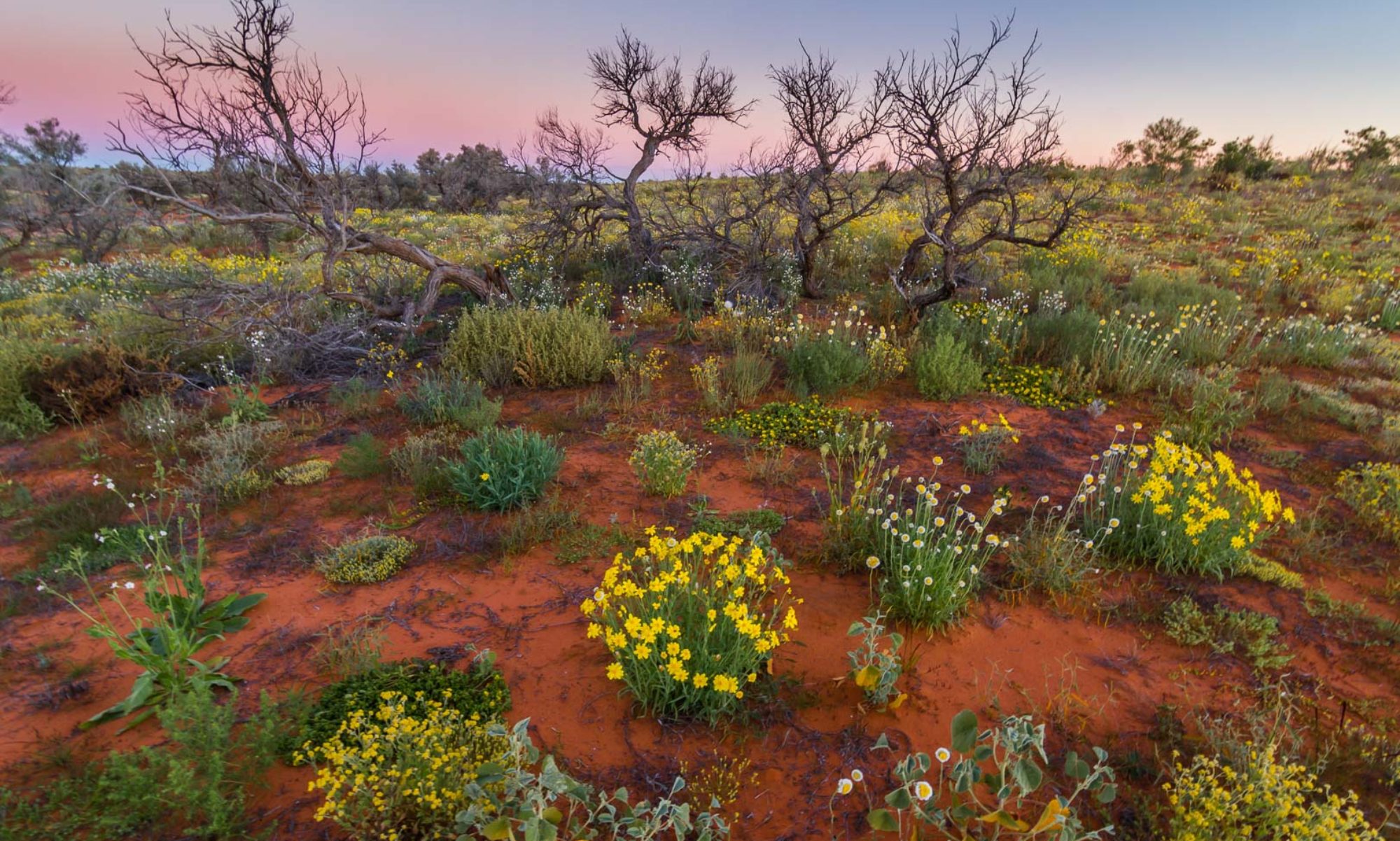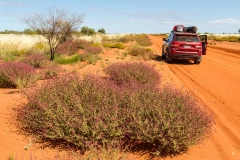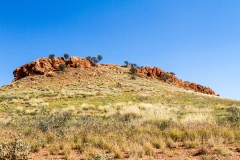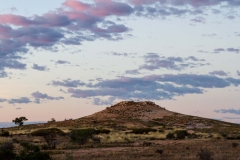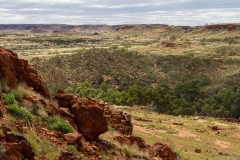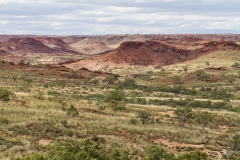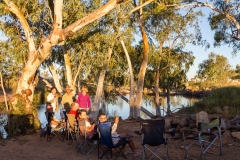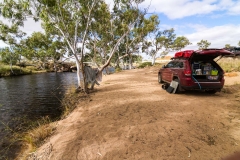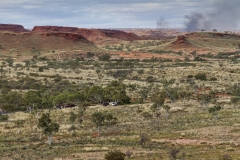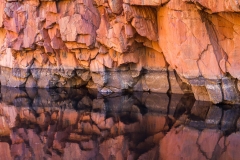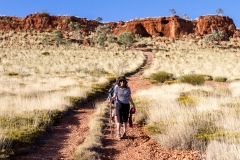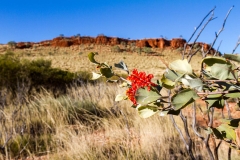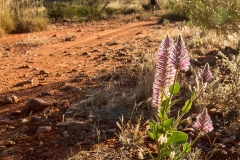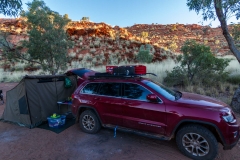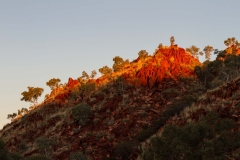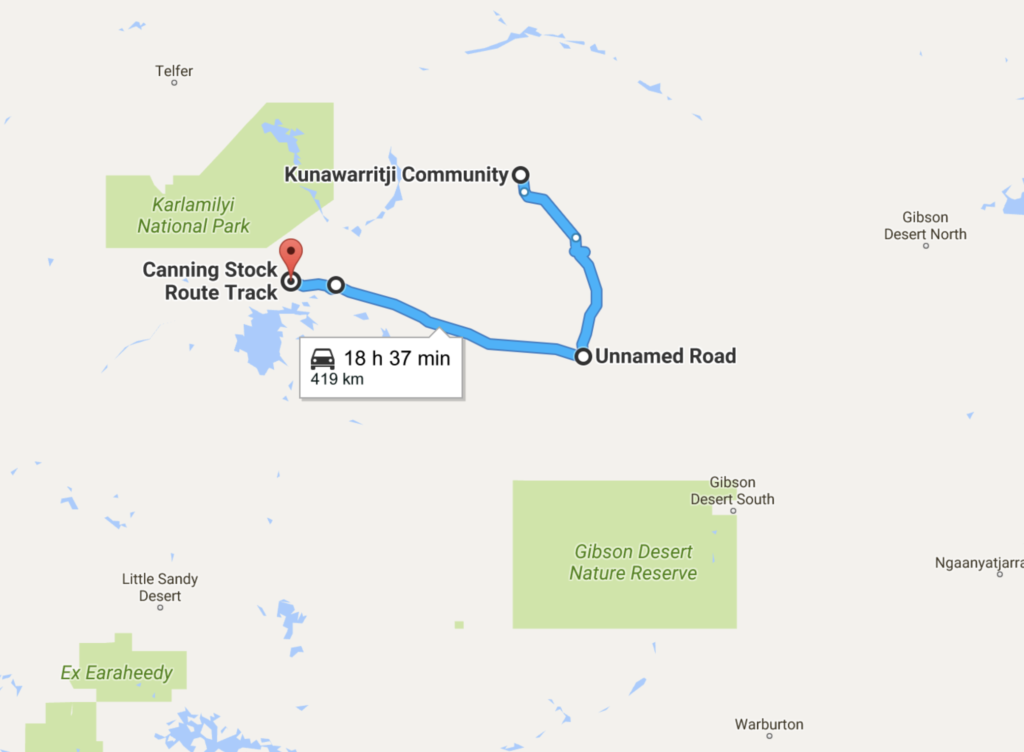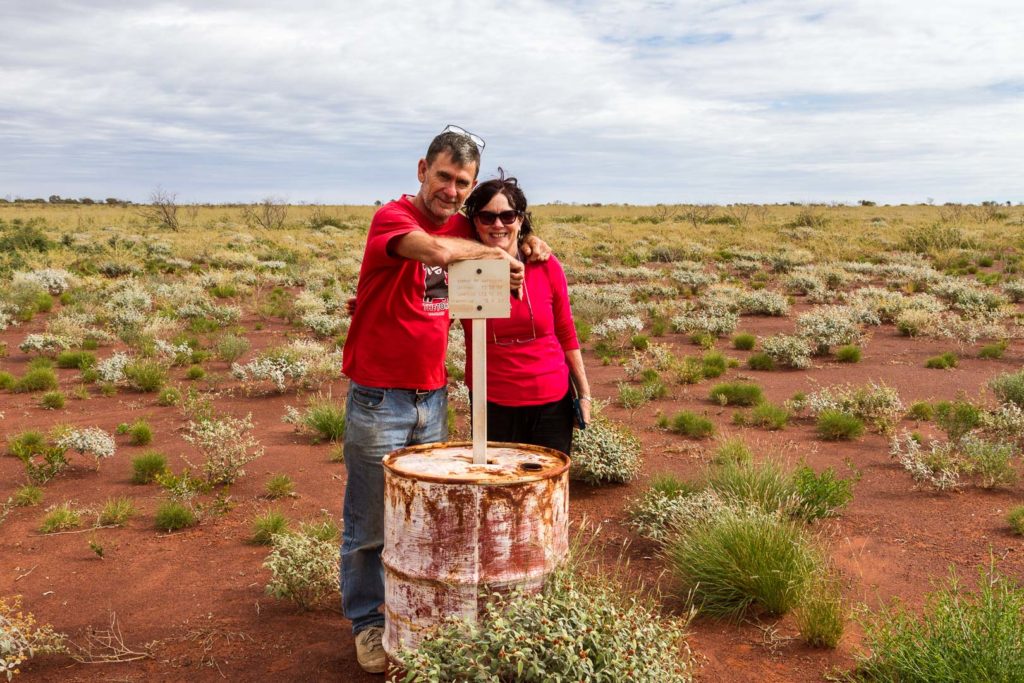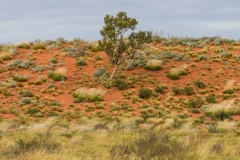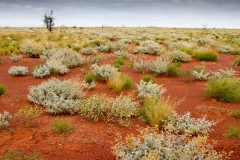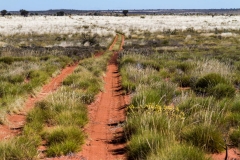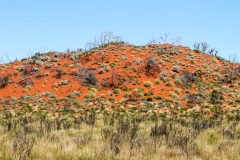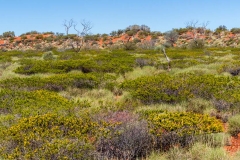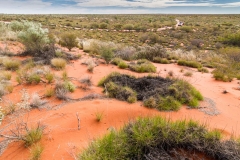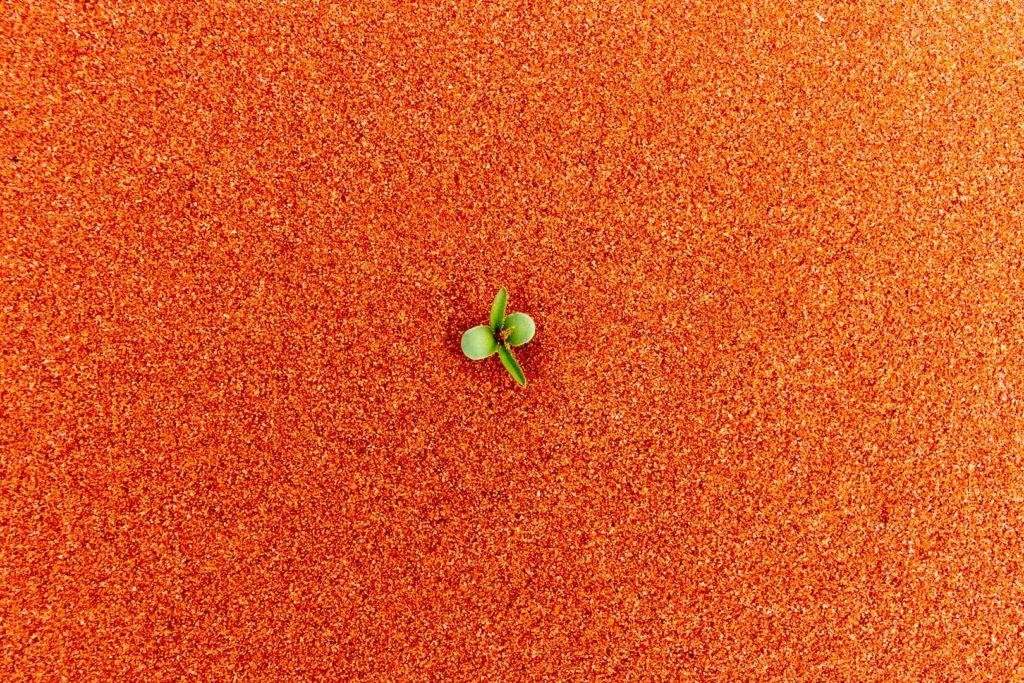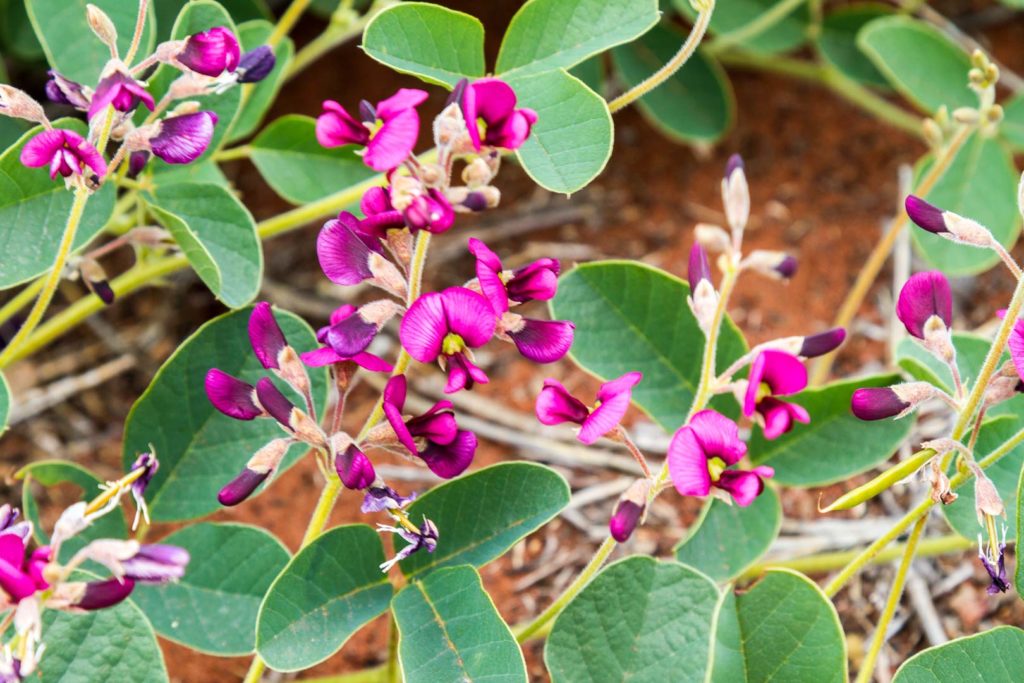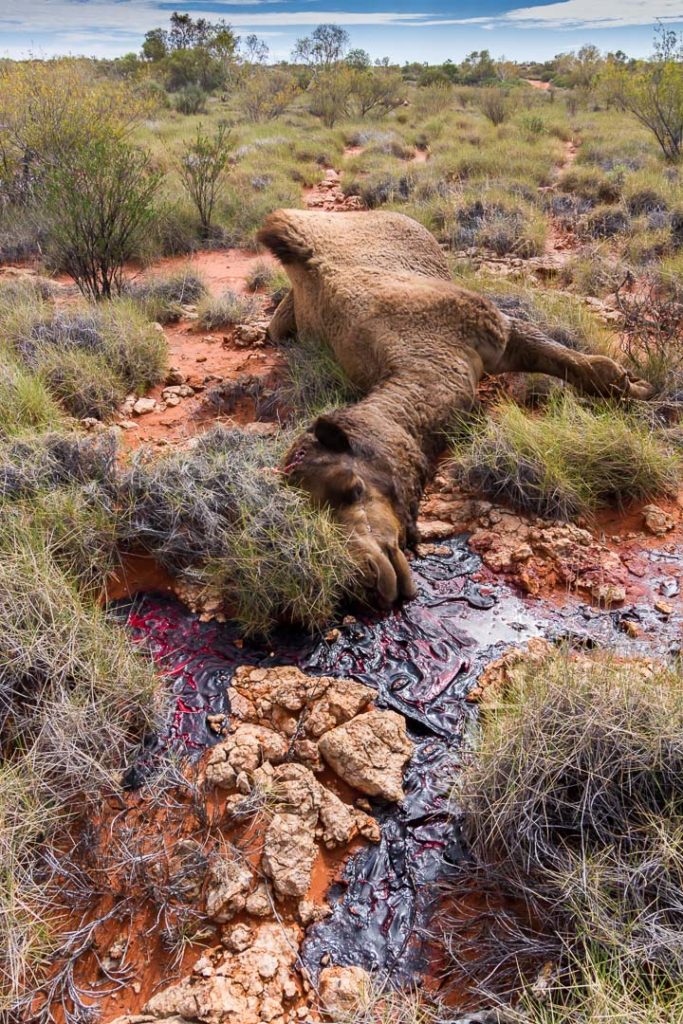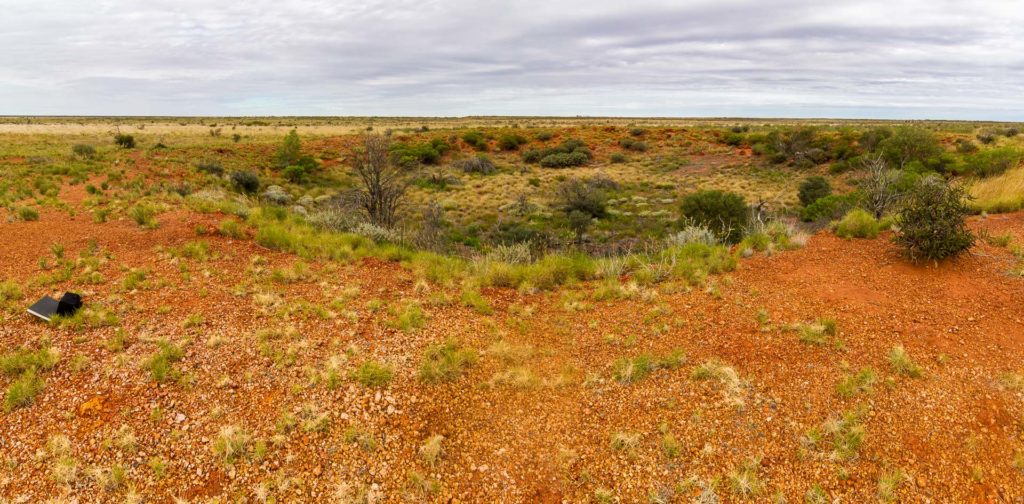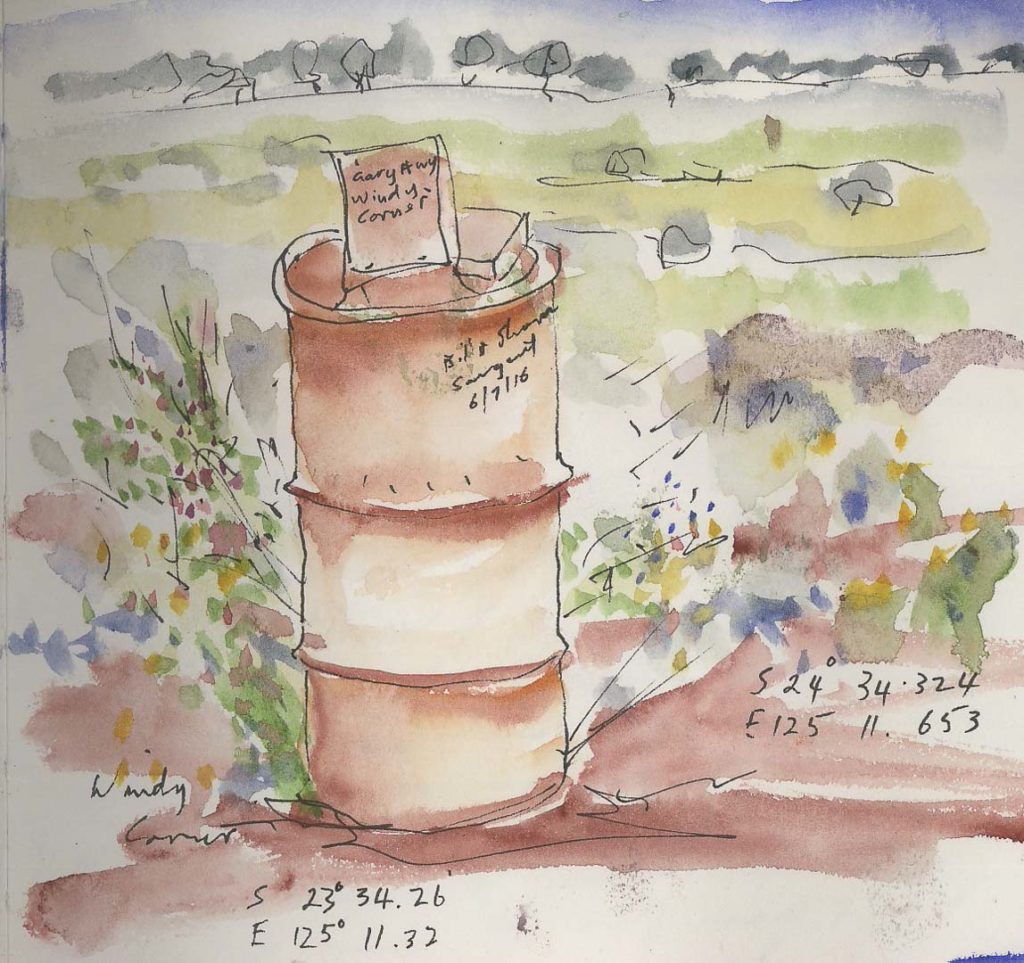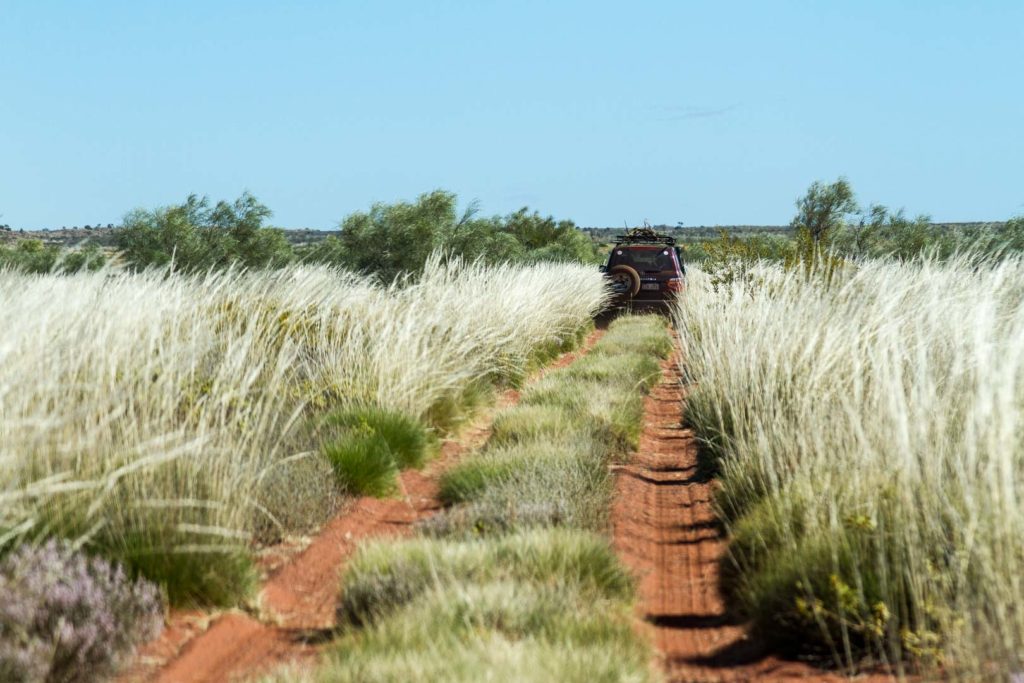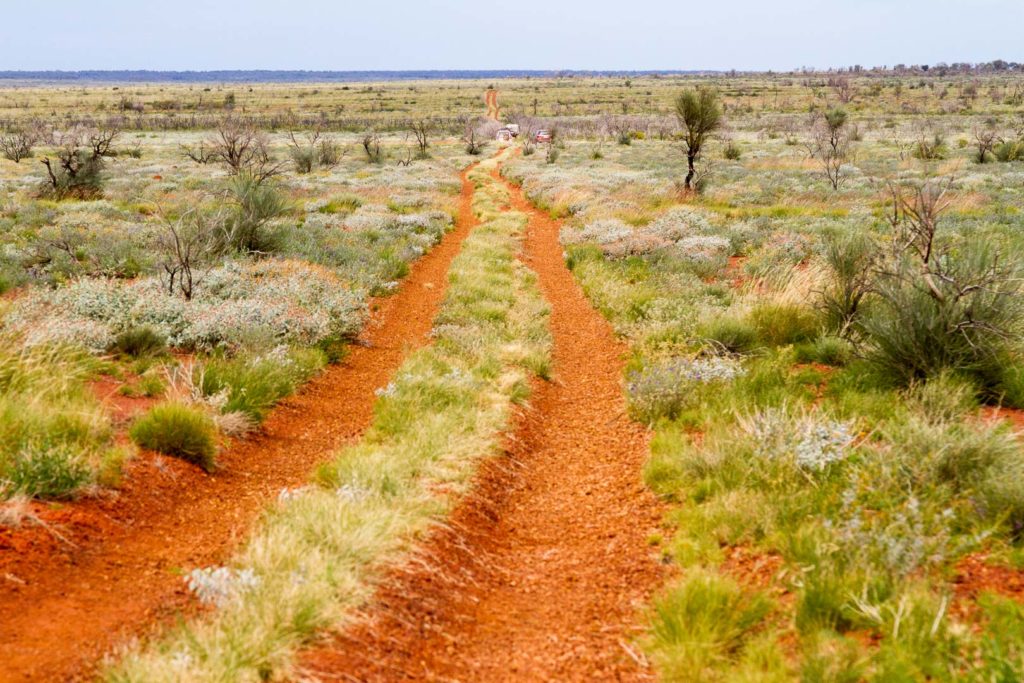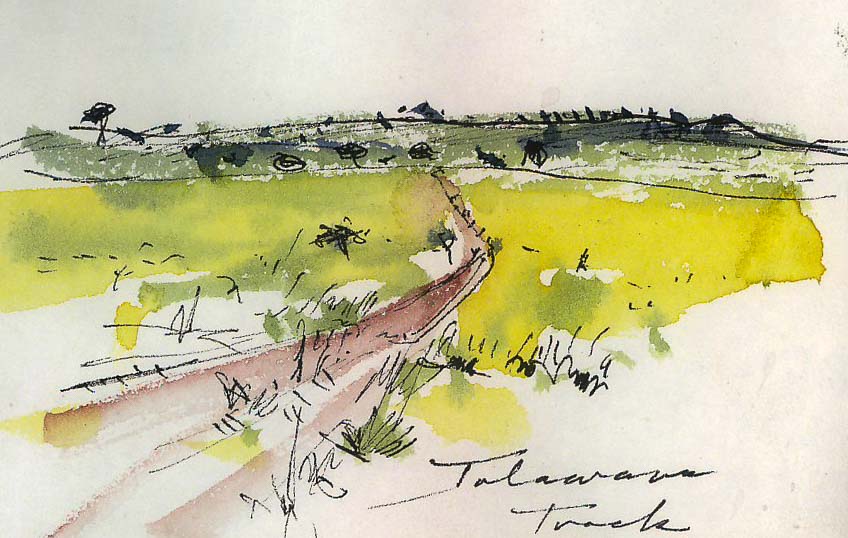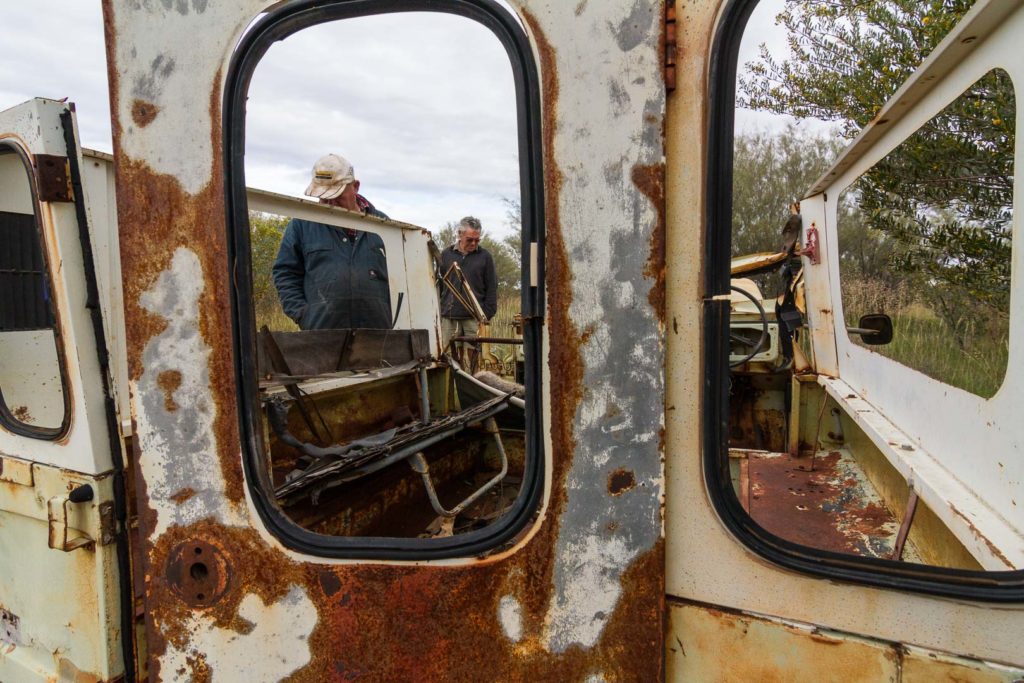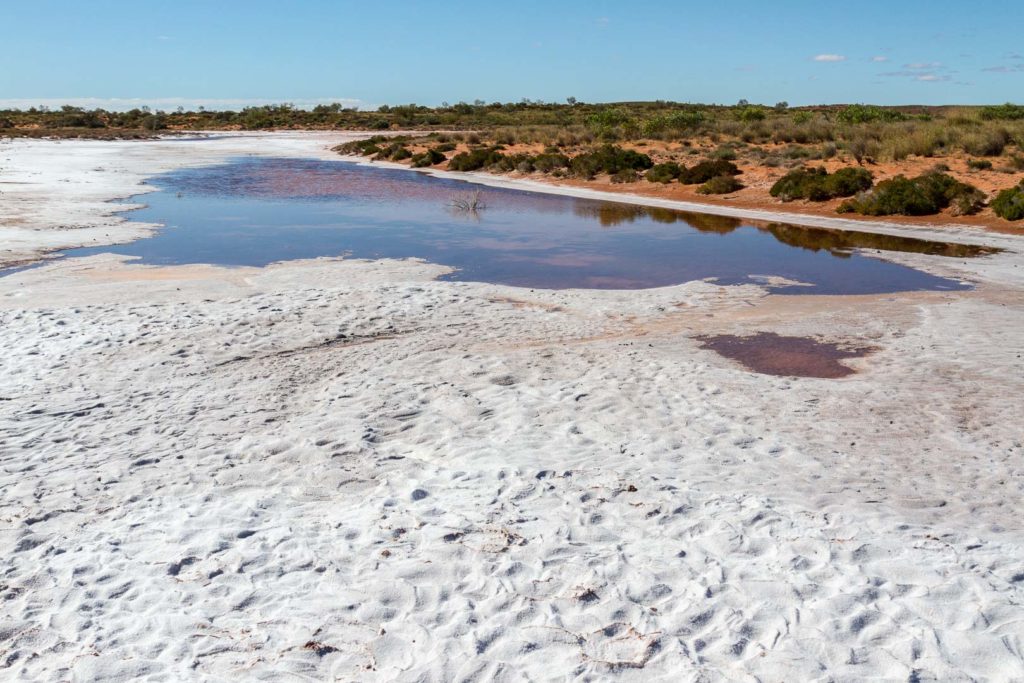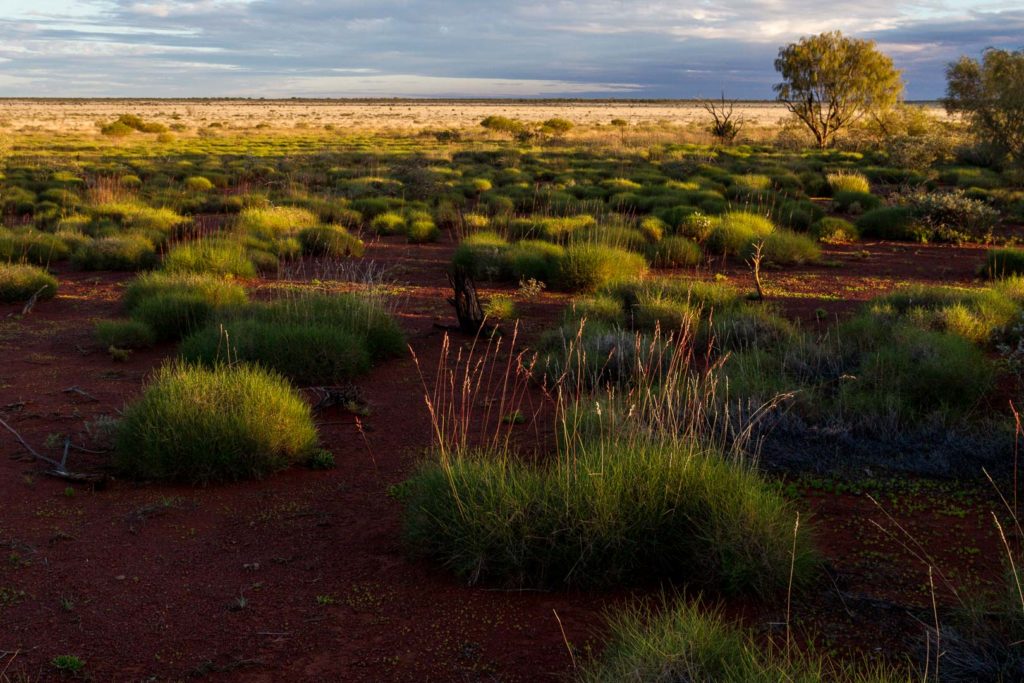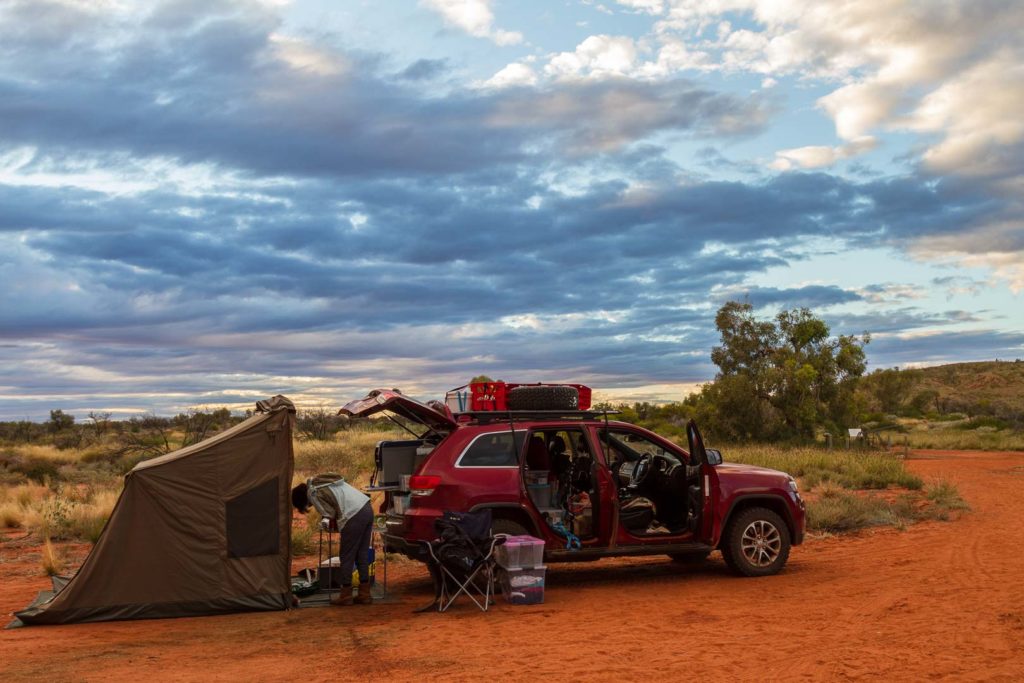8 July, 2016
The next part of our trip took us to Karlamilyi National Park, Rudall River.


It was 81 kilometres from our camp to the neat and tidy, Parnngurr Community where we bought fuel and ice-cream! Fuel here was $3.20/L and I took on 75L. Yesterday’s economy was the worst of the trip, 14L/100km.
A cuppa on the side of the road before the township had us discover an interesting insect, a blistered pyrgomorph, a cross between a cricket and a grasshopper. It was quite a remarkable creature.
The countryside around Parnngurr is very scenic with low hills of orange rock and slopes of new green growth. The road was wet and clayey in parts but later dried out and we could slip along at about 60km/h for some time. It was here that another car in our group narrowly avoided the first vehicle we’d seen in three days.
The road to Karlamilyi National Park had also been graded so it was a comfortable drive into the hills.
The park is quite rugged, bare of grass and shrubs from recent fires. Numerous ghost gums line the streams and waterholes in the park. We found a lovely spot beside one stream, Tingkulatjatjarra Pool, a long stretch of water below the hills. Large river red gums, white barked, knobbly and gnarled are on the banks.
The climb to the Three Sisters behind our camp provided a fine view of the surrounding hills. We stayed here three nights and chilled out, literally as the pool was freezing.
11 July, 2016
Desert Queen Baths was 18 km or so from the Telfer Road over quite a rough and stony track but the hour drive was well worth it.
A series of rock pools led up the gorge from the campground and the walk along the path and over boulders to the final pool was stunning. 
In the afternoon we walked to the nearby hills up a path to a cave on the cliff.
We could really spend a lot more time here.
